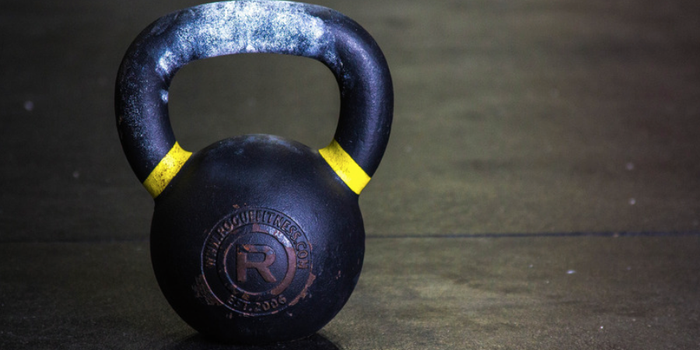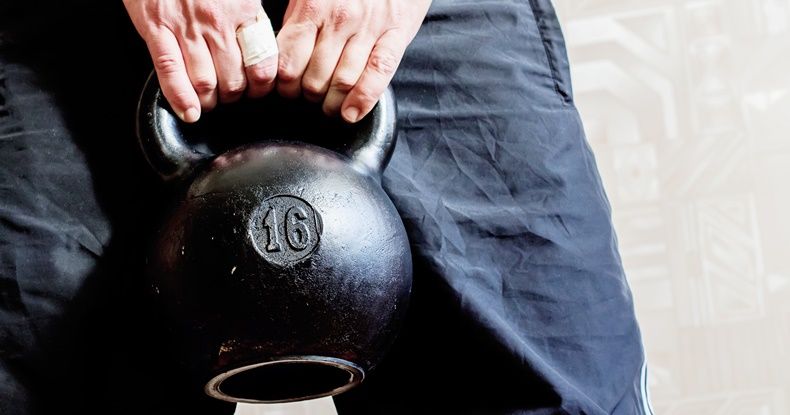Kettlebells are a hugely underrated training tool that can increase your strength, muscle size and fitness levels
Unlike the vast majority of gym equipment, kettlebells were not originally created to whip you into shape.
Their use stems from the old Soviet Union, where they would be used in agriculture to measure quantities of grain and wheat.
Nowadays, you’ve got apps such as MyFitnessPal to help you weigh out your food – so keep the kettlebells in the gym.
Here are three reasons why kettlebell training can kick your backside into gear for improved results:
1. Super strength
To get stronger at a particular lift, you should just keep performing it, right? That’s only half the story.
A study published in the International Journal of Kinesiology & Sport Science pitted the standard kettlebell swing against the deadlift, to see which would actually improve deadlift performance more.
Researchers picked 31 people who all had a deadlift one rep max below 160kg. The group was split roughly into two. Half the group performed deadlifts at 30-40% of their one rep max. The remaining participants performed heavy kettlebell swings.
After four weeks, both groups experienced a 10kg increase in their deadlift one rep max. If all the barbells are being used at your gym, that’s no excuse to stop lifting. Pick up a kettlebell and start swinging.
2. Heart health
While kettlebells can make you stronger, they also protect your ticker.
With heart disease a big killer of British men, any improvement in cardio health and fitness is a good ‘un.
California State University found just 12 minutes of continuous kettlebell swings, as part of a wider circuit-training programme, decreased blood pressure in a group of guys with previous training experience.
If you’re strapped for time in the morning before work, or only have a limited lunch for workout time, then this could work for you.
It’s also a great conditioning finisher to add to the end of your strength-training workouts.
3. More reps, more muscle
An offshoot of improved heart health is greater VO2 max.
This is a measure of the max amount of oxygen you can use during an exercise.
While this may appear to be of a greater benefit to cardio pursuits like running or swimming, it can also work wonders for weightlifting.
The greater your VO2 max, the longer you can perform at a high intensity level. This means you’ll be able to lift heavier weights for more reps. Let the gains begin!






















































